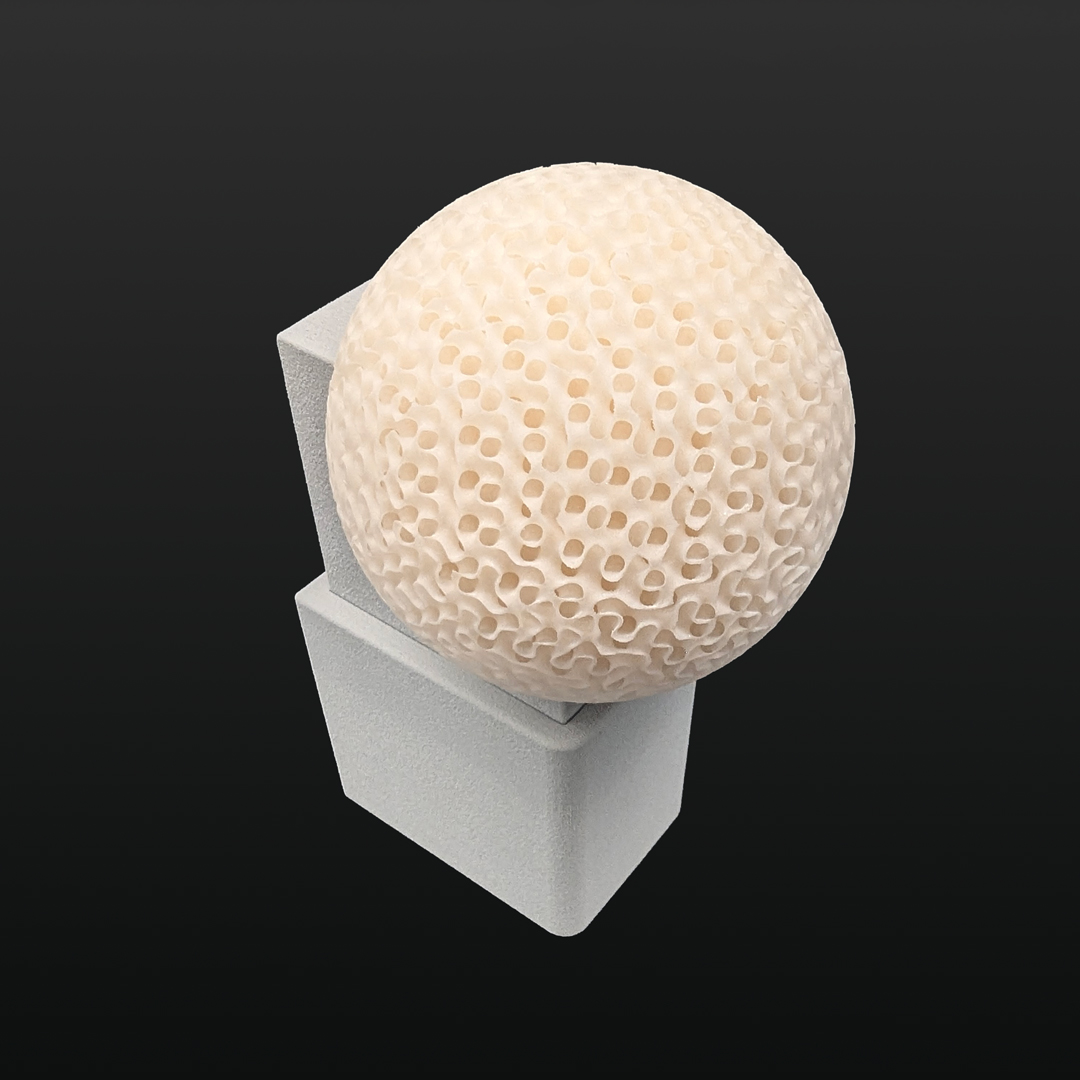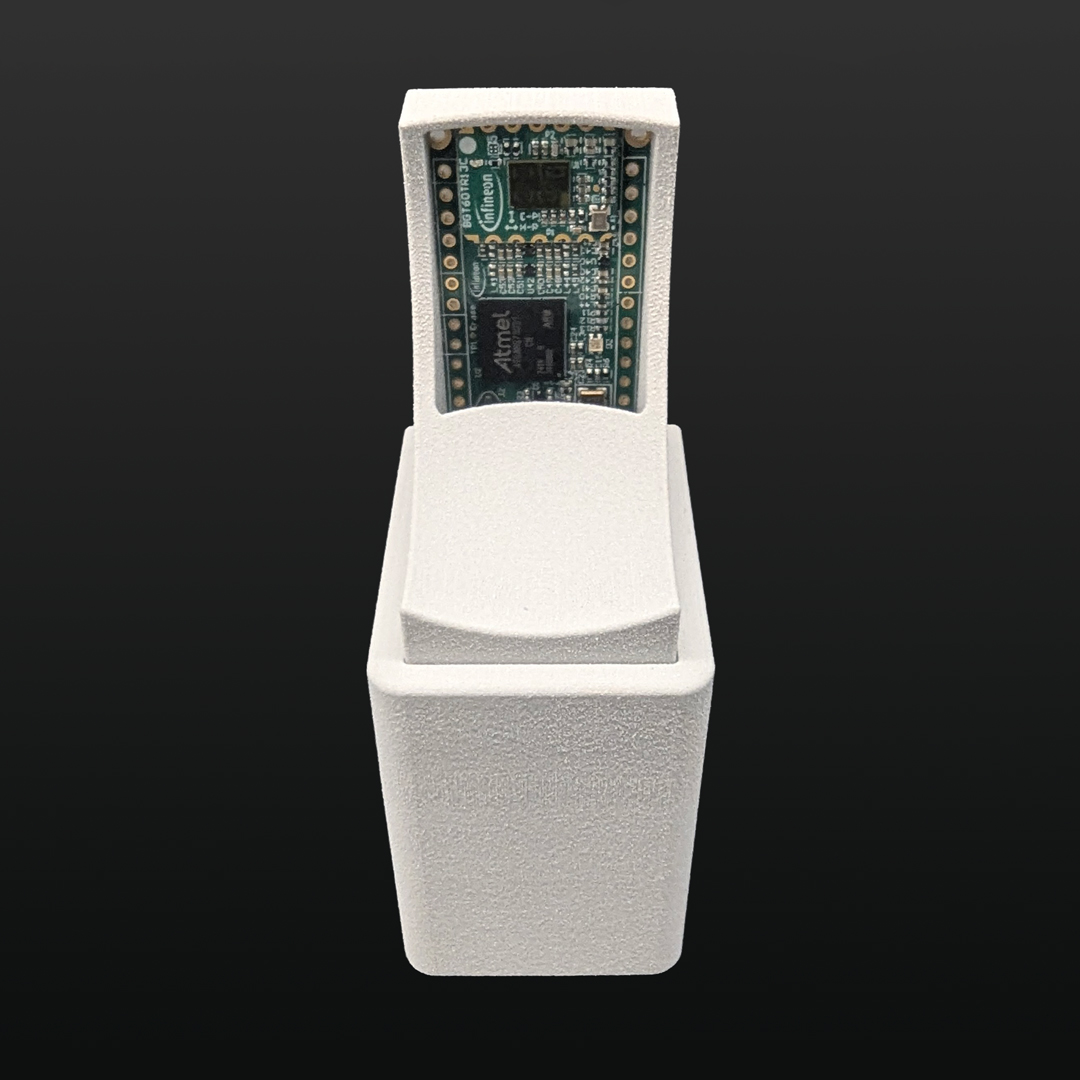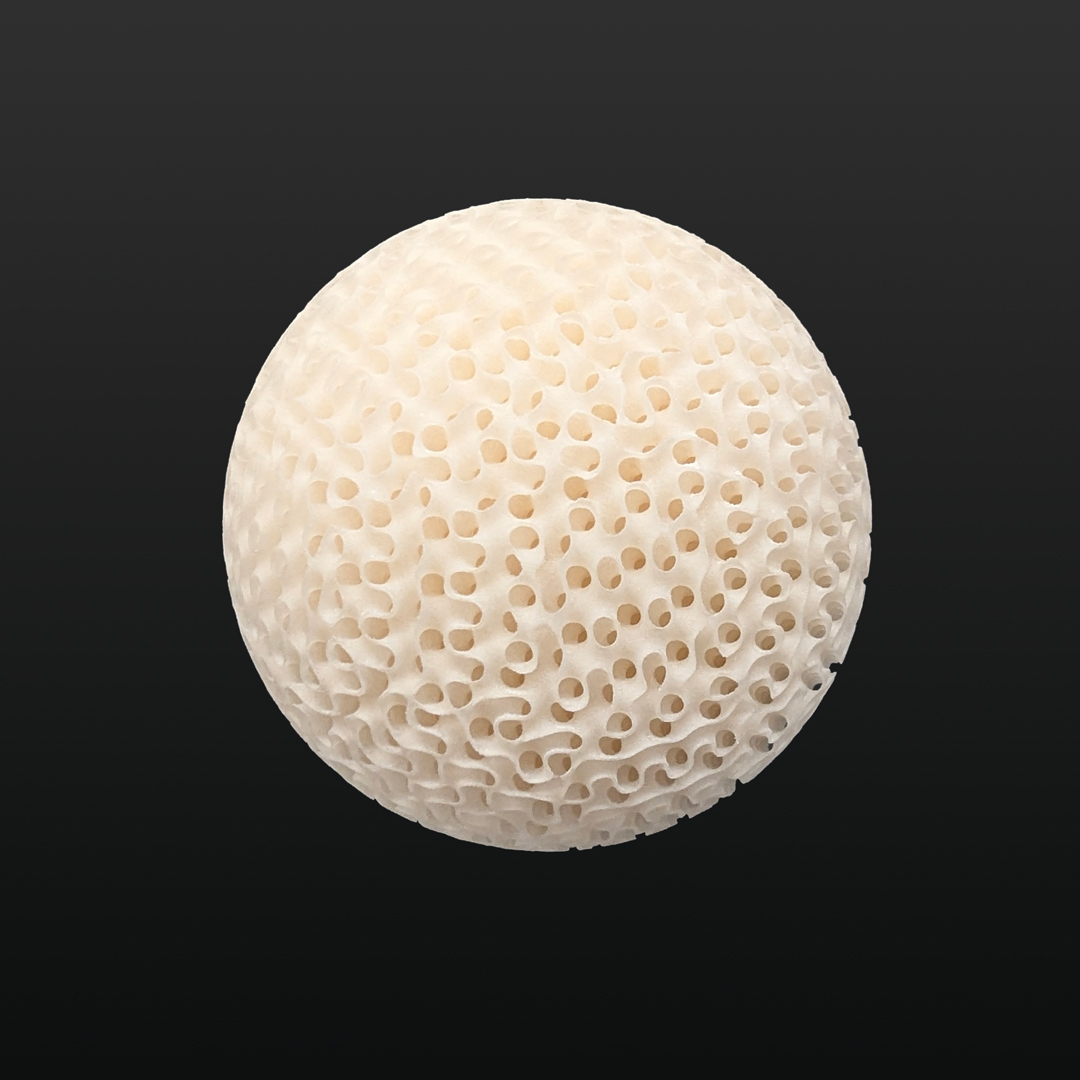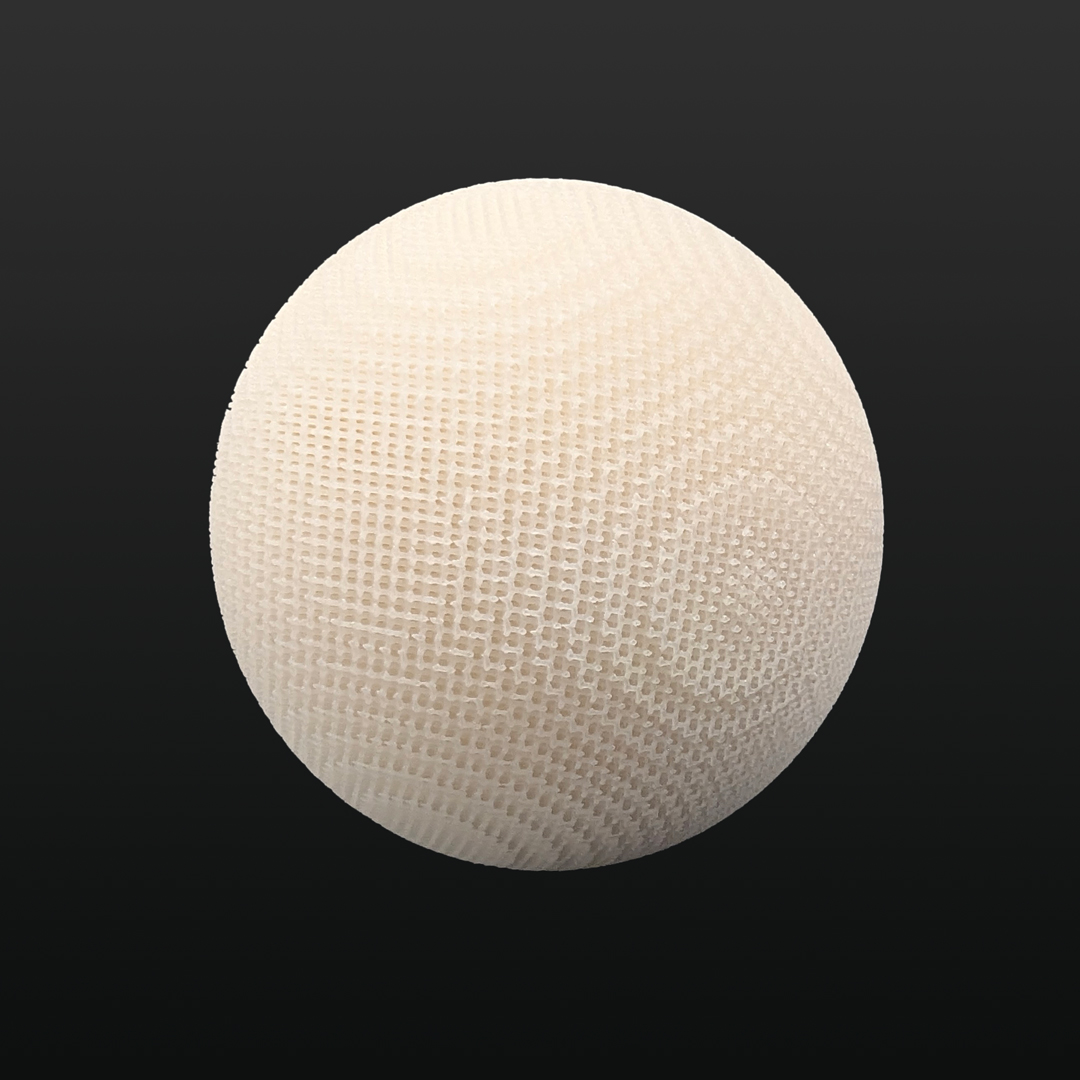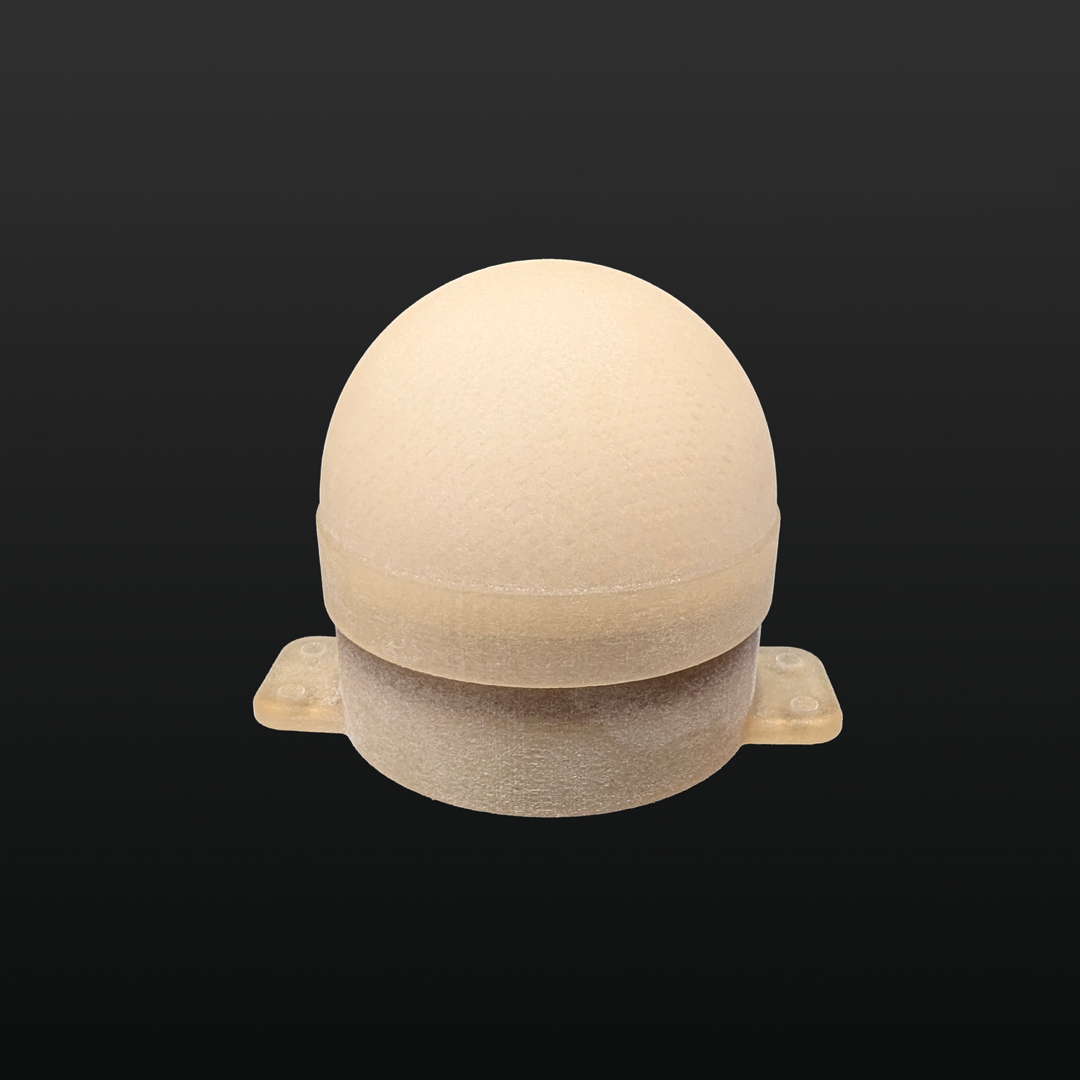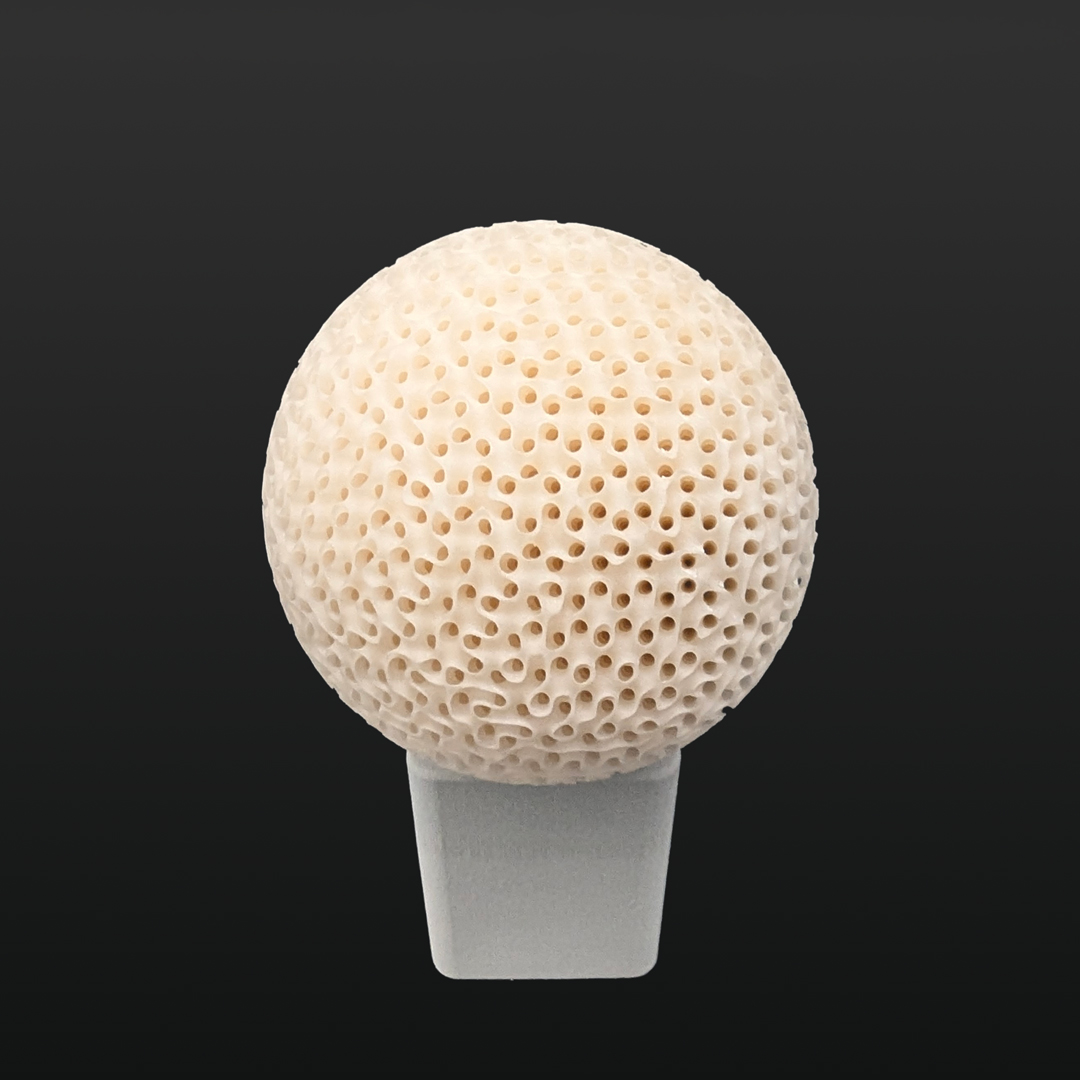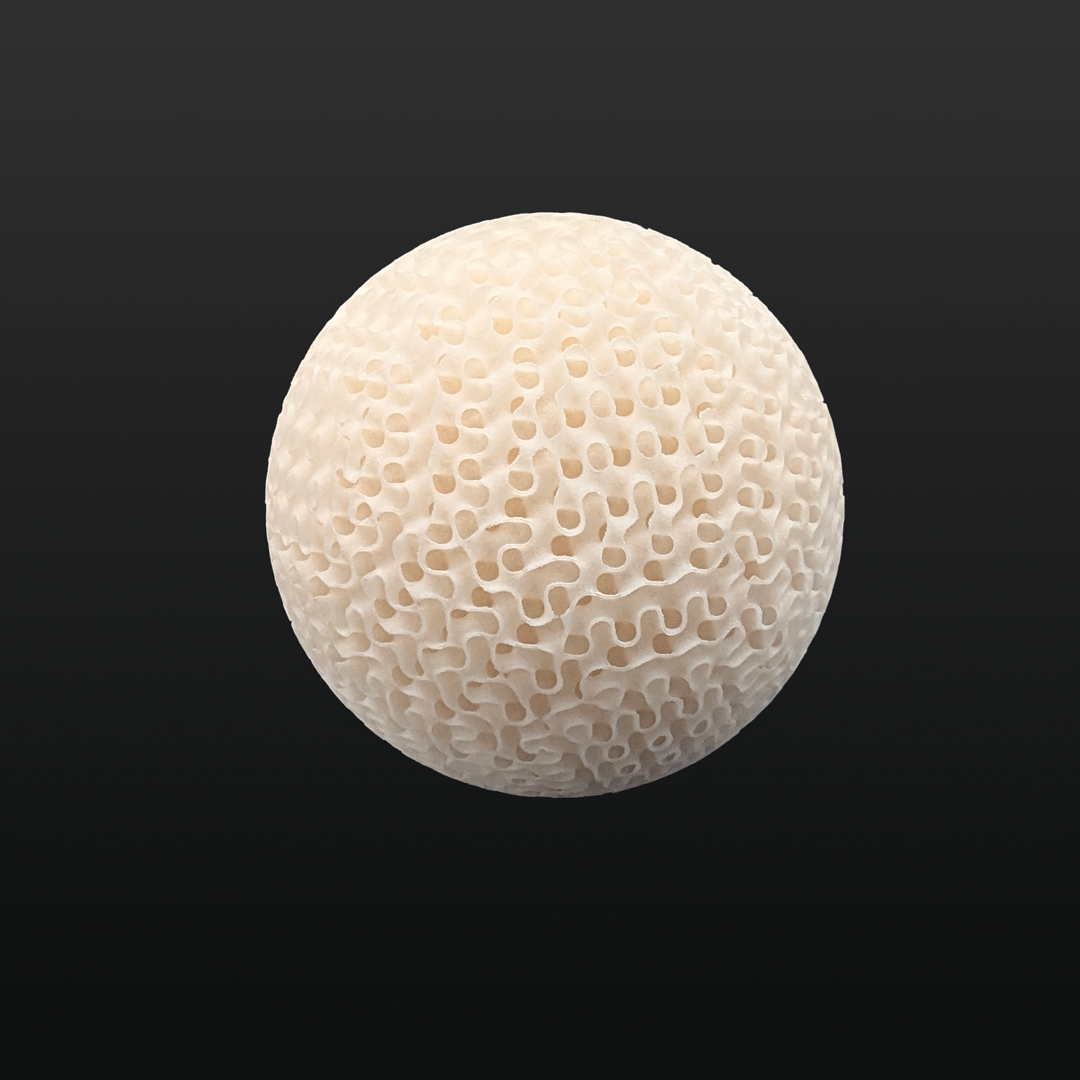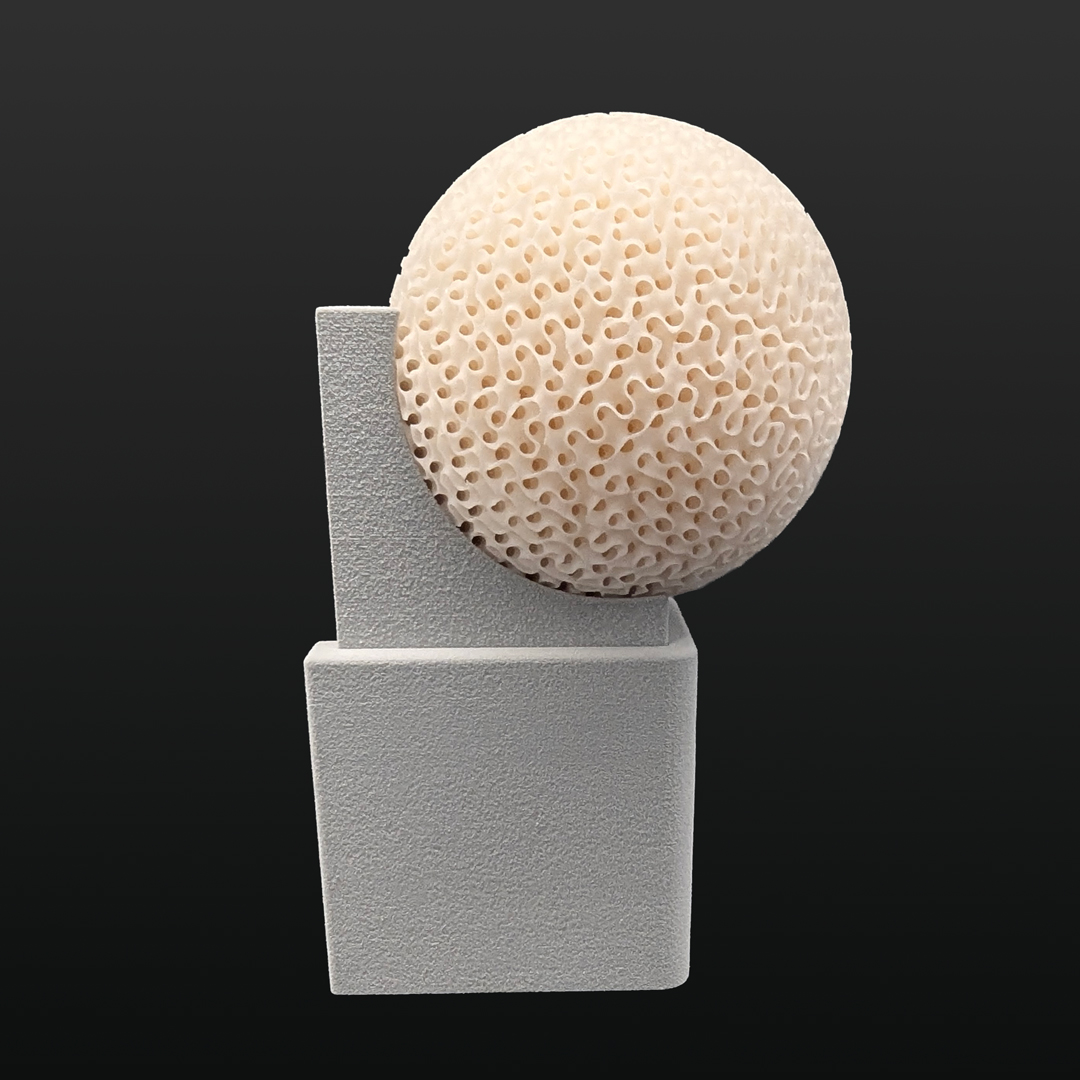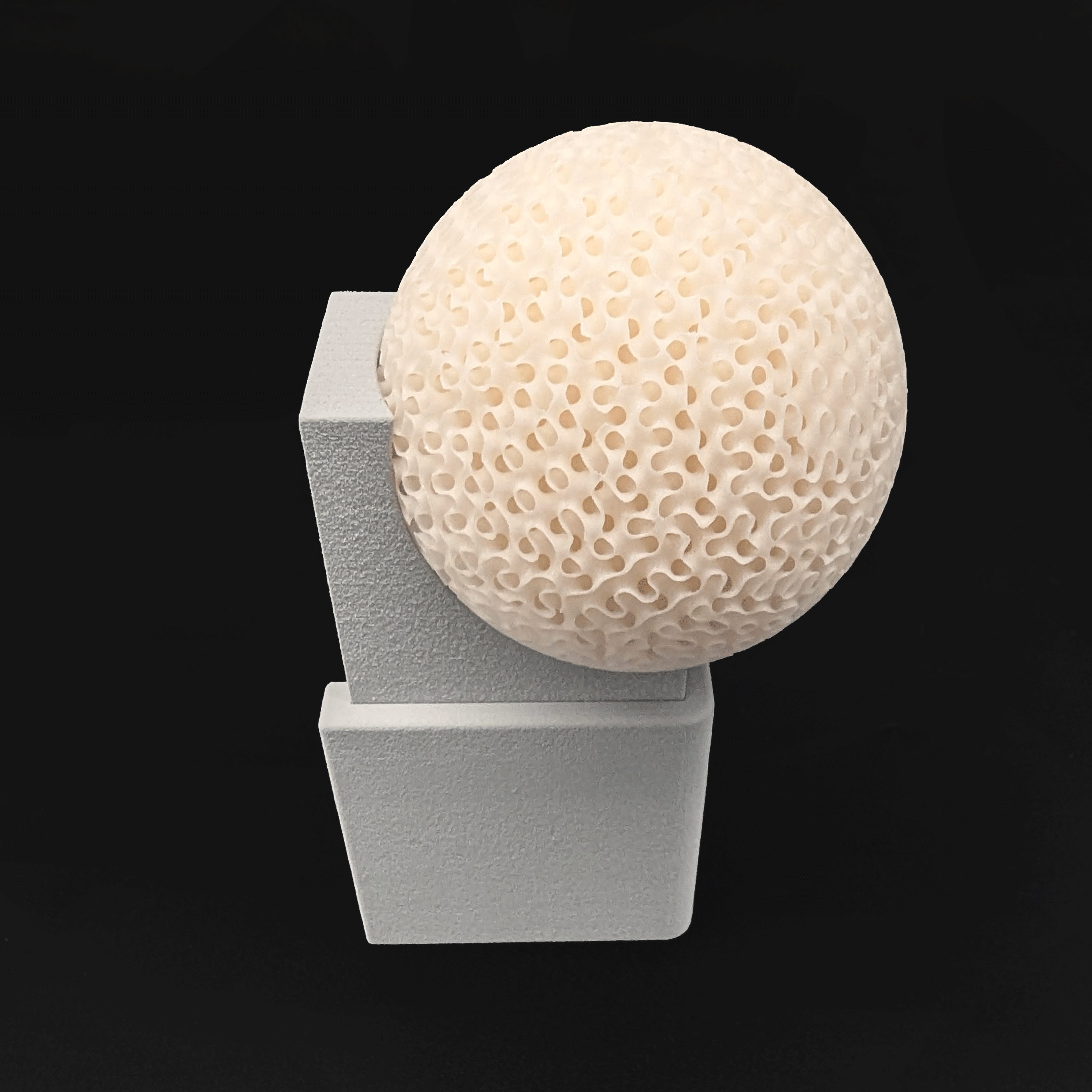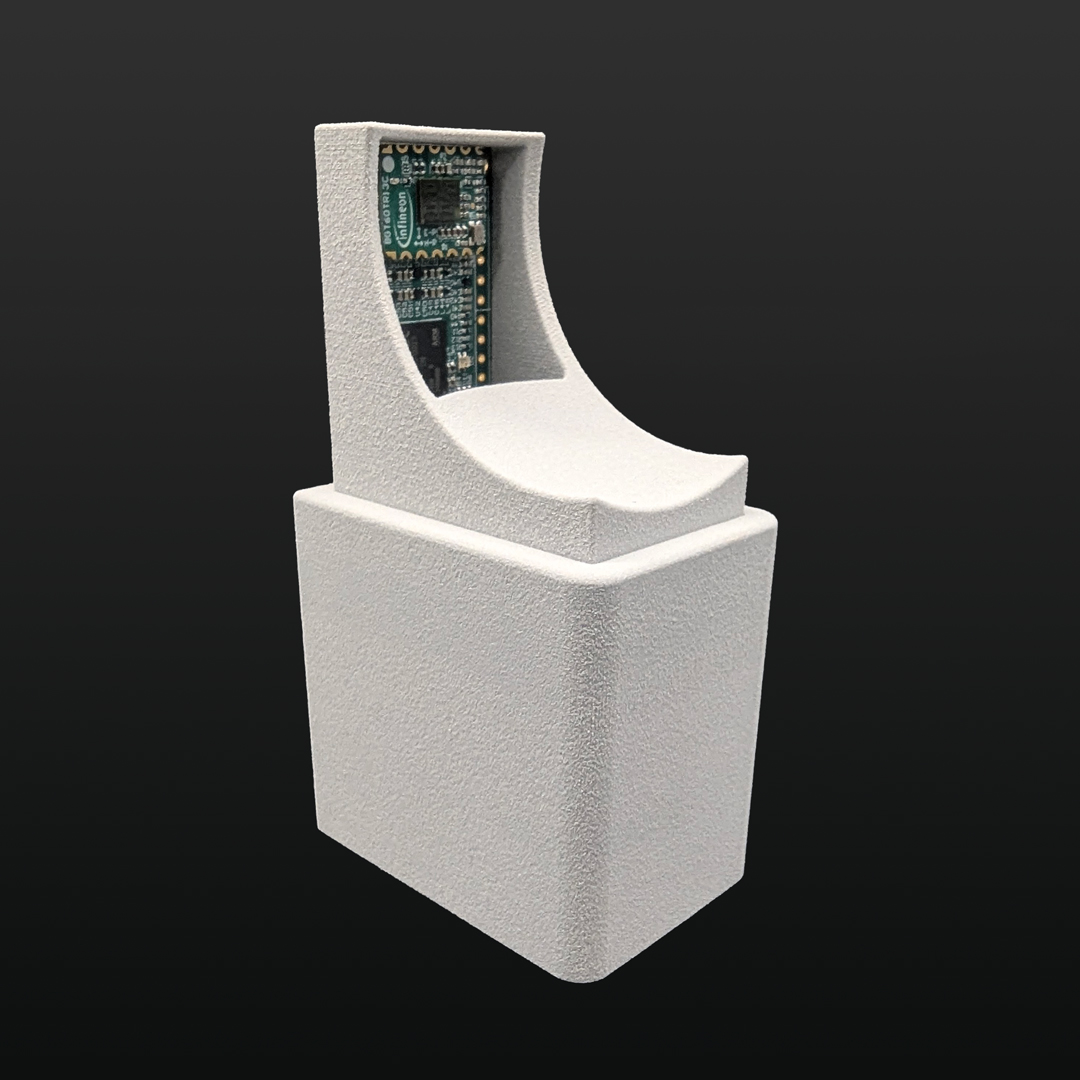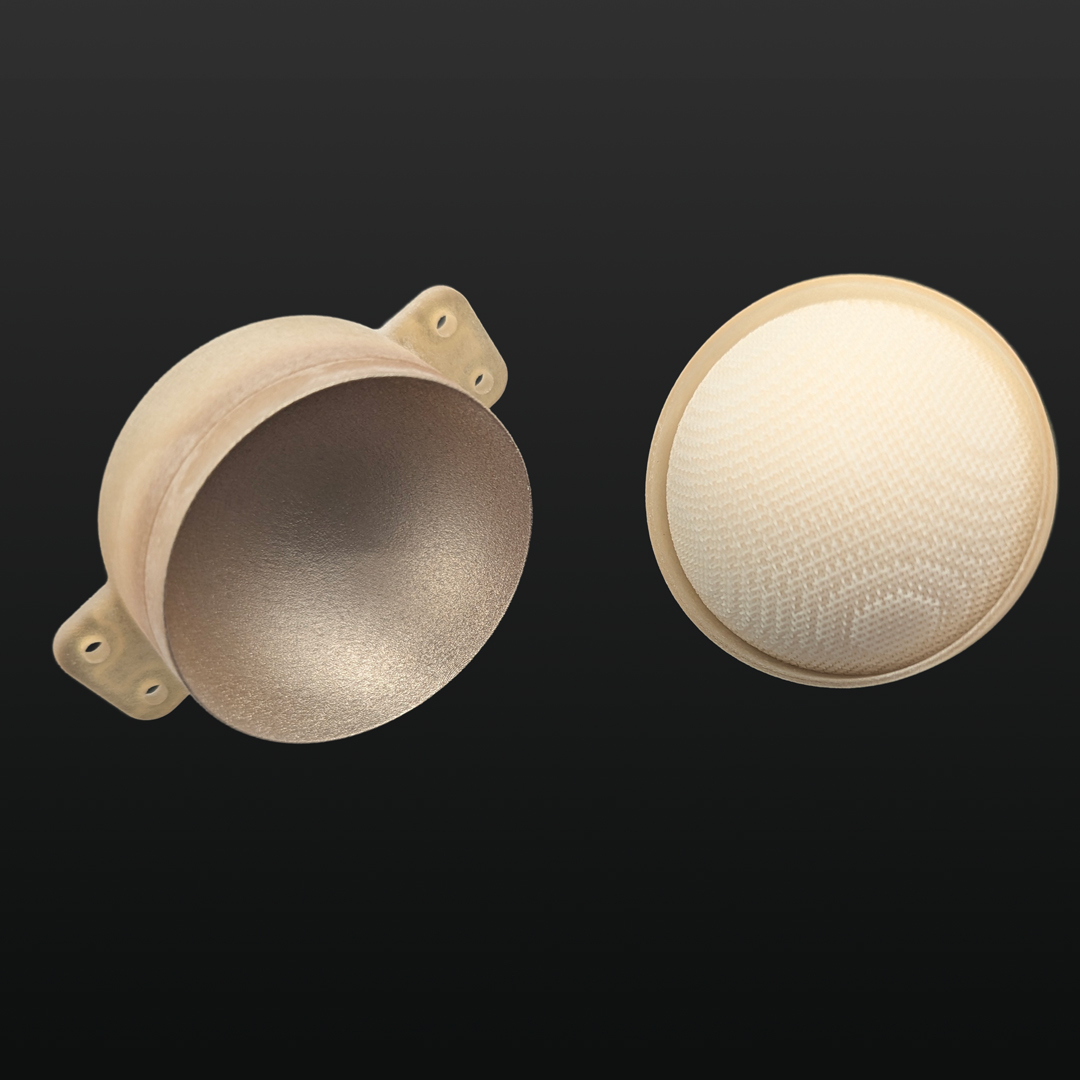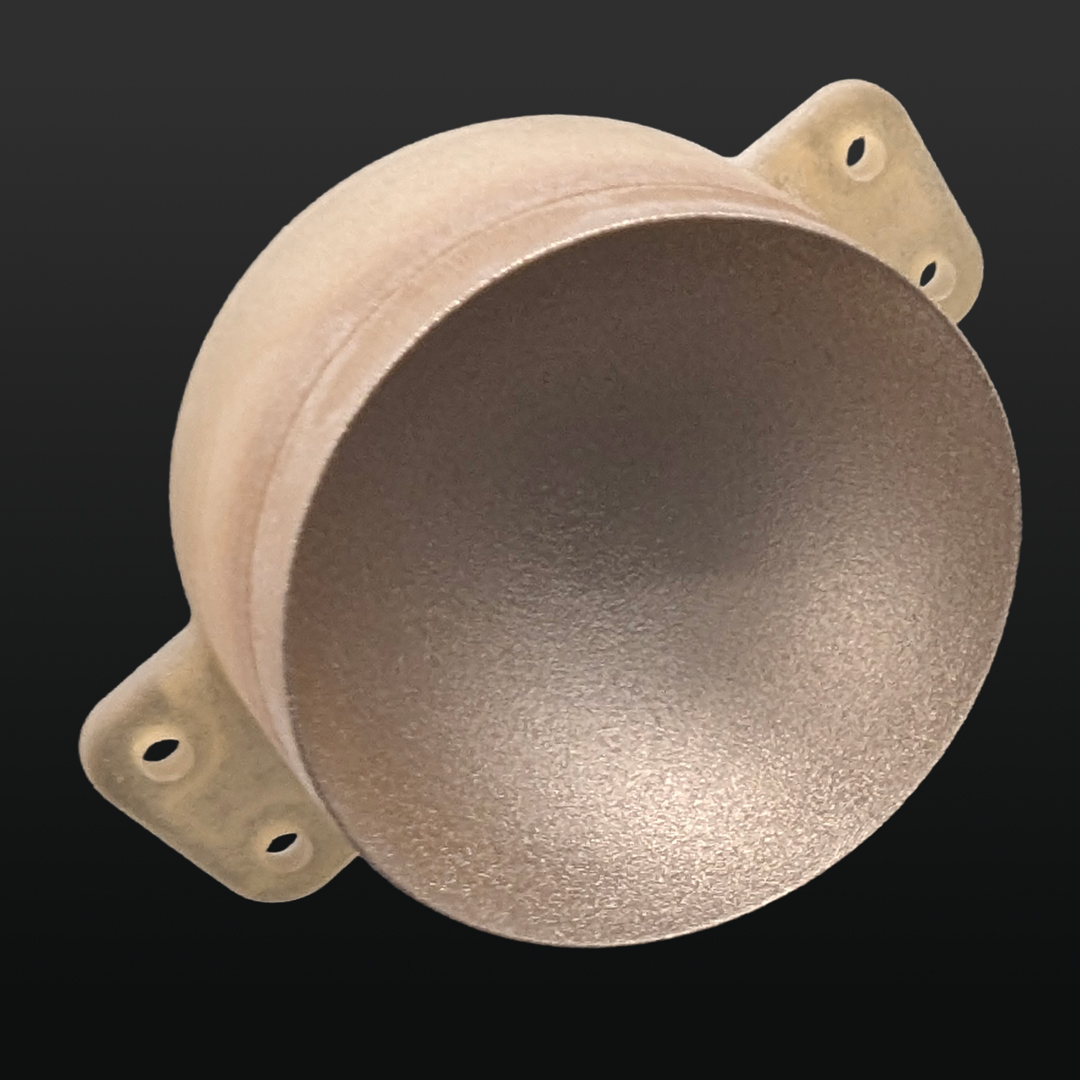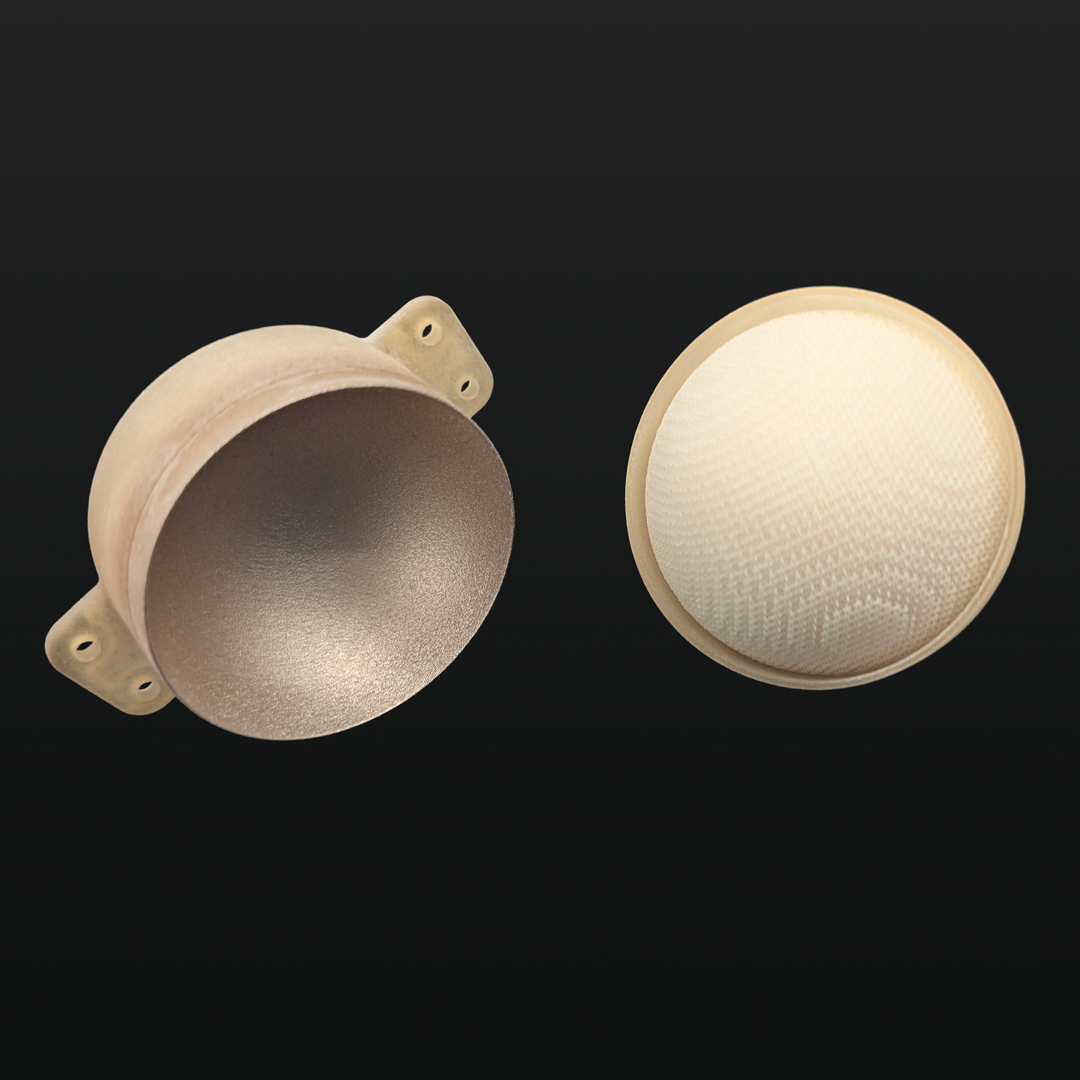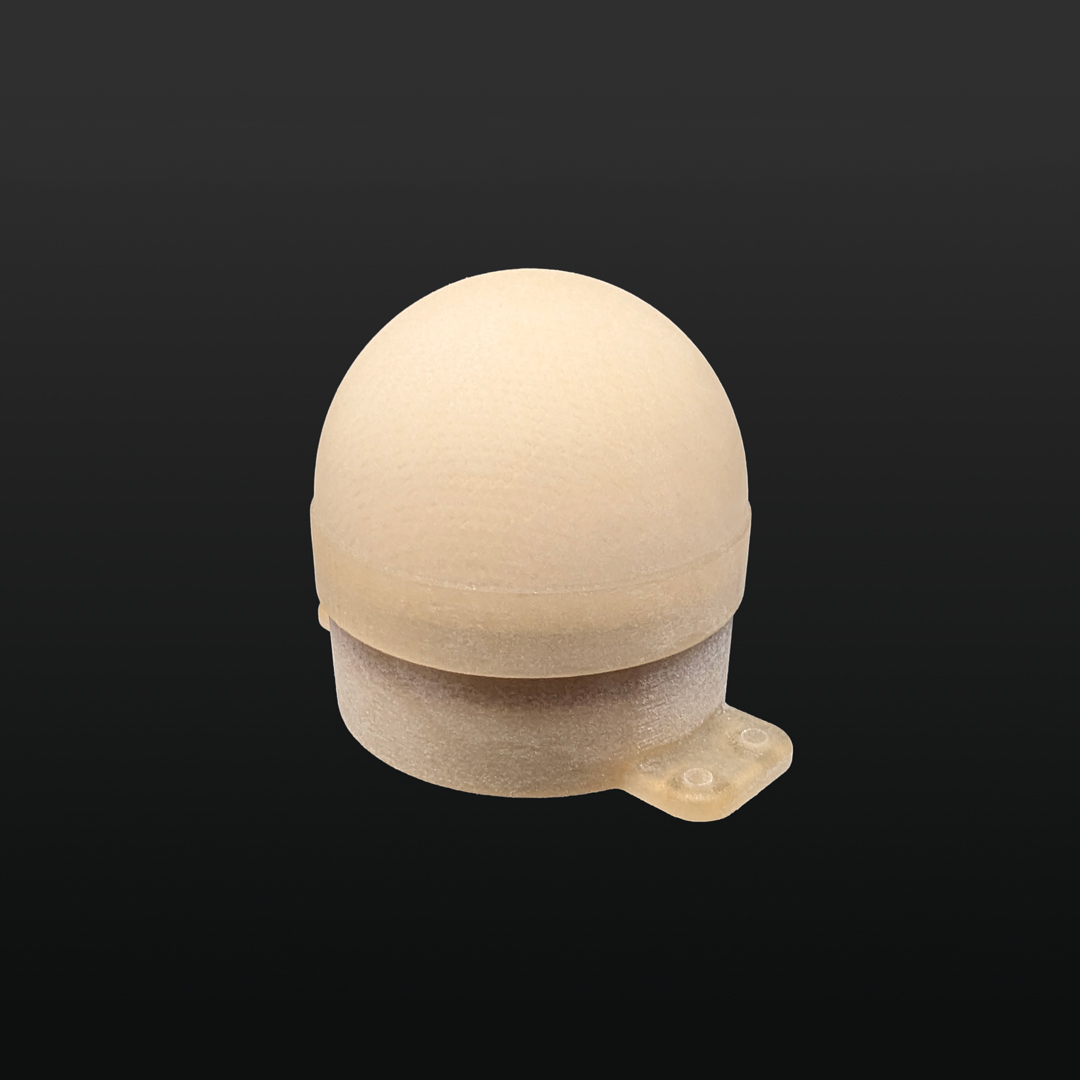Radio Frequency and Microwave Solutions
Inkbit releases a new class of low-loss materials for the next-generation of mmWave and dielectric components.
// Read the Press Release
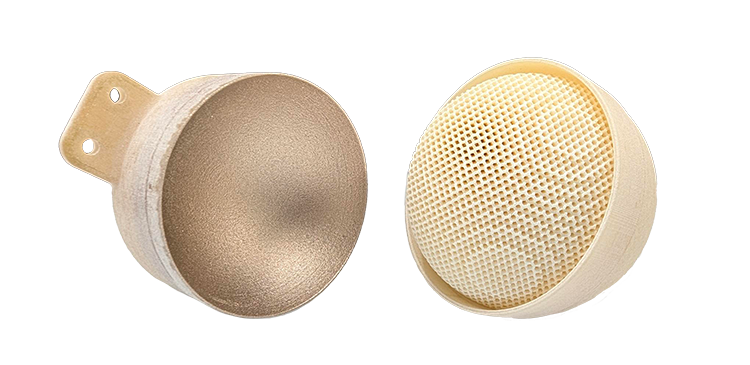
Solving Signal Integrity Challenges at the Speed of Innovation
Inkbit is advancing the way dielectric components are designed and produced for complex electromagnetic applications. With our Vision-Controlled Jetting™ (VCJ) technology and low-loss COT materials, we enable engineers to design, iterate, and scale with precision that meets the demands of next generation antenna components.
From precise Dk tuning and multi-material parts to continuous GRIN profiles across complex topologies, we empower engineers to design freely and print without traditional compromises.
Inkbit’s RF solutions span a wide range of applications including:
- Gradient-index (GRIN) lenses
- Waveguides & dielectric filters
- High-performance radomes & enclosures
- Conformal antennas & metasurfaces
- Beam-shaping and switch-beam lens arrays

Enabling mmWave Engineers
Inkbit’s additive manufacturing platform gives engineers the power to create antenna components with unmatched control over dielectric performance, geometry, and production scalability. From GRIN lenses and Luneburg antennas to custom wave-shaping structures and signal routing components, our platform unlocks new possibilities beyond traditional limitations.
Why Engineers Choose Inkbit:
- Continuous dielectric gradients
- Broadband performance across 3–90+ GHz
- Custom geometries with integrated features
- Low-loss, thermally stable materials
- Lightweight parts with end-use consistency
| Challenge | Solution |
| Gain | up to 30+ dBi GRIN structures for greater range and isolation. |
| Bandwidth | Intrinsically wide-band (3–90 GHz) for higher speeds and lower congestion |
| Field-of-View | Nearly 180° coverage with GRIN lenses |
| Power Efficiency | Reduced power consumption with higher gain and efficiency. |
| Cost Reduction | Lower component and system costs through fewer installations. |
Get in touch with our team
Learn about how our production platform can spark innovation for RF engineering and design teams.
Industries We Serve
Aerospace and Defense
Telecom
Automotive
Drones and Unmanned
Defense & Aerospace
Mission-Ready Signal Hardware
Inkbit delivers additive manufacturing solutions for defense and aerospace teams developing RF and microwave components. Using our low-loss COT material and Vision-Controlled Jetting™, engineers can rapidly design and produce high-performance dielectric parts for mission-critical systems.
Key Applications:
- GRIN lenses for beamforming and radar
- Beam-shaping dielectric inserts
- Lightweight RF components for UAVs and satellites
- Conformal antenna assemblies
- Custom signal-routing enclosures
Automotive & ADAS
Scalable Radar & Sensor Production
Automotive OEMs and Tier 1 suppliers to develop compact dielectric parts for radar and ADAS systems. Manufacturers can reduce part count, enhance signal performance, and scale for high-volume production.
Key Applications:
- GRIN lenses for high resolution radar
- Sensor housings with integrated sealing and mounts
- Compact dielectric lens systems
- Radar covers and shields
- Enclosures with embedded features for ADAS modules
Telecom & Wireless 5/6G
Smarter Antennas, Faster Deployment
Inkbit helps wireless infrastructure teams accelerate the development of antennas and mmWave components for 5G, 6G, and beyond. Engineers can print precision dielectric structures directly from digital designs, no tooling required or complex geometry compromising production performance.
Key Applications:
- Luneburg lenses for wideband antennas
- mmWave antenna housings and supports
- Waveguides and phase-shifting components
- Beam-steering dielectric arrays
- Custom enclosures for small cell or base station deployment
Accelerating the Next-Generation of Antenna Systems
Vista™
Inkbit’s Industrial 3D Printer
- High Precision and Accuracy
- Multi-Material Production Builds
- Throughput for Scaled Production
Construct
Inkbit’s Build Software
- Auto-Generate GRIN Lattices
- Multi-Material Design Enabled
- No Design or Support Constraints
COT
Inkbit’s Cyclic Olefin Thermoset
- Low Dielectric Loss
- Low Permativity
- Tough and Strong
Inkbit Technology Advantages
Better Precision, Higher Gain
Inkbit’s gradient-index (GRIN) components enhance signal gain or reduce transmission power, while suppressing side lobes. Printed directly in high-precision dielectric materials, these lenses maximize wave energy focus for next-gen wireless systems.
Ultra-Wideband Performance
Our dielectric structures exhibit low-loss, broadband behavior from sub-6 GHz to 90 GHz. This allows for multi-band functionality in a single component without the need for redesign. Engineers can streamline system complexity while supporting mmWave, and emerging 6G applications.
Minimized Beam Degradation
Traditional beamformers lose effectiveness as scan angles increase. GRIN lenses produced using our VCJ technology preserve beam fidelity and gain across wide scan angles, ideal for adjustable wireless systems.
Broader Field-of-View
Our innovative lenses expand the effective field-of-view of phased arrays and fixed-feed systems, enabling better coverage without increasing hardware complexity – ideal for mmWave sensing, satcom, and radar.
Leaner SWaP-C
By consolidating multiple components into a single printed structure using lightweight, low-loss materials, Inkbit helps deliver leaner, more efficient wireless platforms optimized for performance.
An Introduction to GRIN Lenses
What Are GRIN Lenses?
GRIN (Gradient Index) lenses are advanced dielectric components designed to steer electromagnetic waves – similar to how traditional lenses bend light, but at microwave and mmWave frequencies. Unlike conventional lenses with a fixed refractive index, GRIN lenses feature a gradually changing refractive index throughout the lens body.
Benefits of Inkbit GRIN Lenses:
- Superior beam shaping and focusing
- Wider field of view and multi-band compatibility
- Reduced size, weight, and power consumption (SWaP)
With Inkbit’s COT low-loss materials and Vision-Controlled Jetting™ (VCJ) technology, engineers can design and print complex GRIN lenses, while having access to cost effective rapid iteration cycles – with a platform that can scale end-use production and make changes as needed from a design standpoin.

Traditional Roadblocks Eliminated
Historically, GRIN lenses were difficult to manufacture, requiring multi-step machining or discrete stacking, and were limited by cost and material constraints. Our additive manufacturing systems and platform delivers GRIN lenses that are:
- Lightweight
- Broadband-capable
- Ready for production
- Fully customizable in geometry and dielectric gradient
Whether you’re developing for 5G/6G infrastructure, aerospace systems, or defense platforms, our technology gives you the fastest path from concept to fully functional, field-ready hardware.
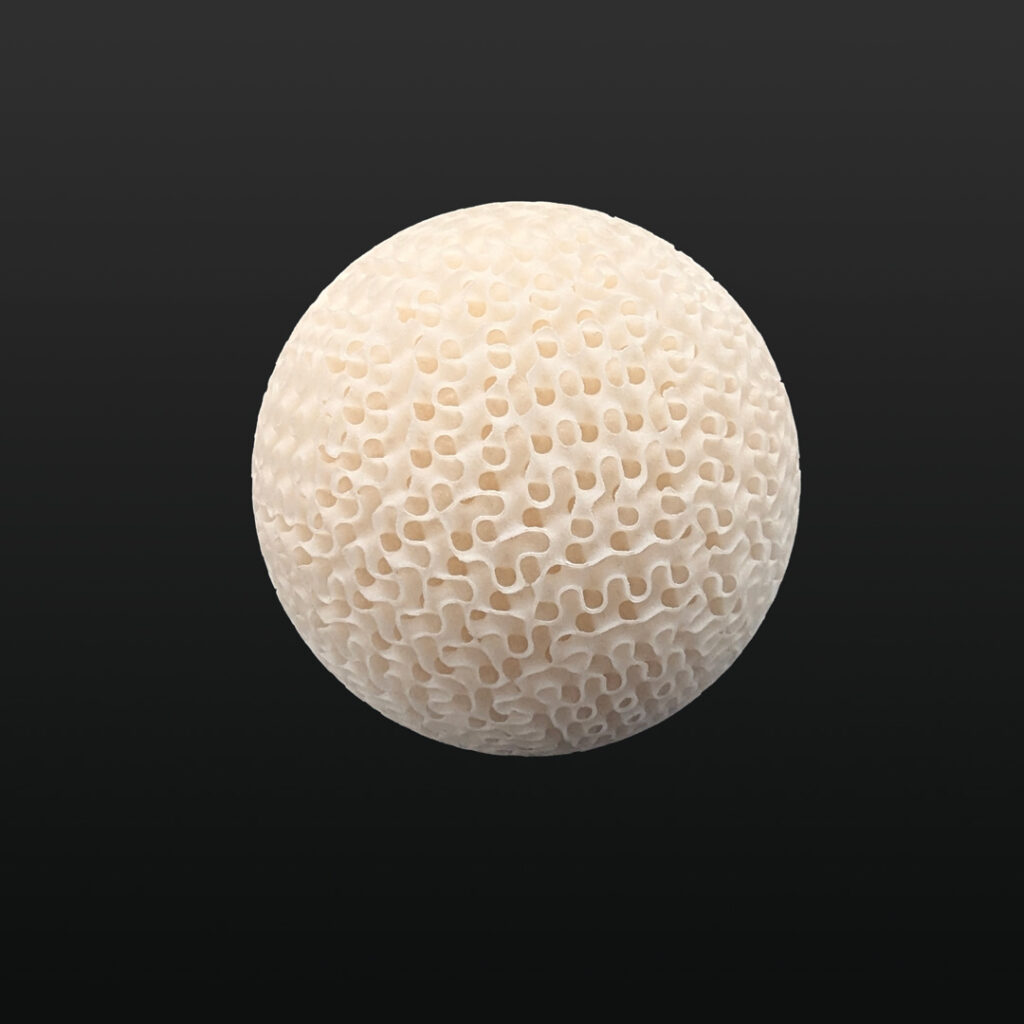
GRIN Lens Examples
Download our industry overview brochure.
Frequently Asked Questions
What is Inkbit COT?
Inkbit COT is a cyclic olefin thermoset material designed for RF applications. It offers low dielectric loss, low dielectric constant, and high thermal stability, making it ideal for mmWave telecom, radar, and antenna systems.
How does Inkbit improve RF manufacturing?
Inkbit uses Vision-Controlled Jetting (VCJ) technology to produce high-precision, multi-material components at scale. This enables the creation of GRIN lenses and other RF components with unmatched accuracy and efficiency.
What are GRIN lenses?
GRIN (Gradient Index) lenses have a dielectric constant that varies smoothly throughout the lens, enabling precise beam shaping for improved gain, bandwidth, and field-of-view.
What industries benefit from Inkbit COT?
Industries such as telecom, automotive, aerospace, and defense benefit from Inkbit COT’s lightweight, durable, and high-performance RF solutions.
How scalable is Inkbit’s technology?
Inkbit Vista printers offer production-scale throughput, capable of printing up to 112 lenses (62 mm diameter) in under 20 hours, with minimal post-processing labor.
